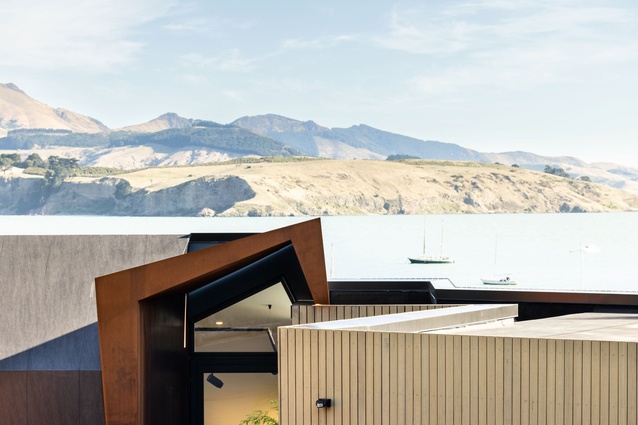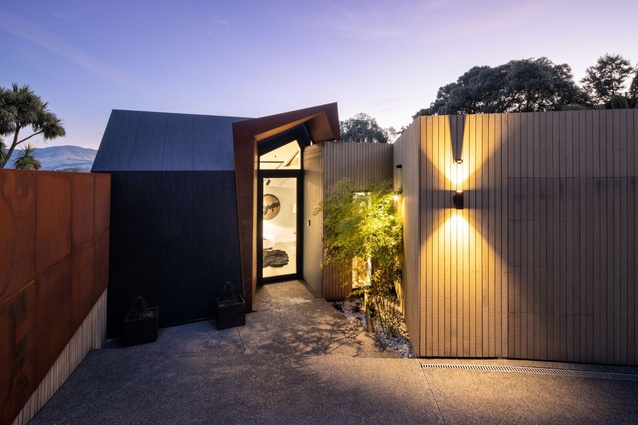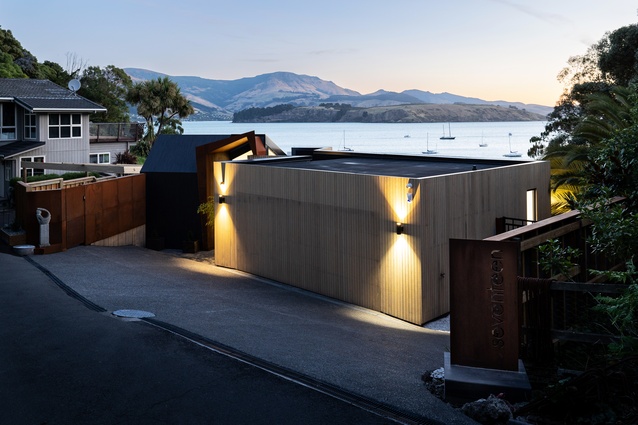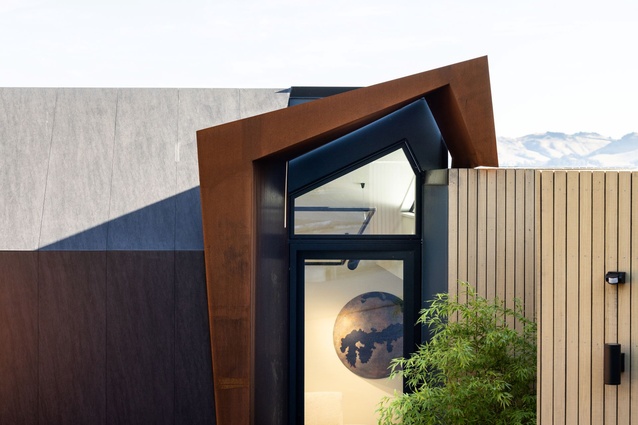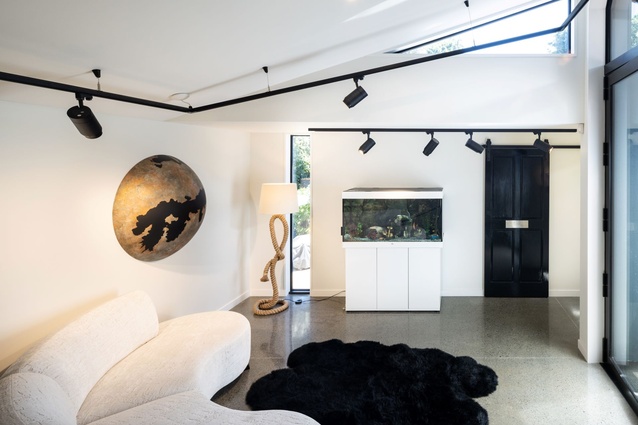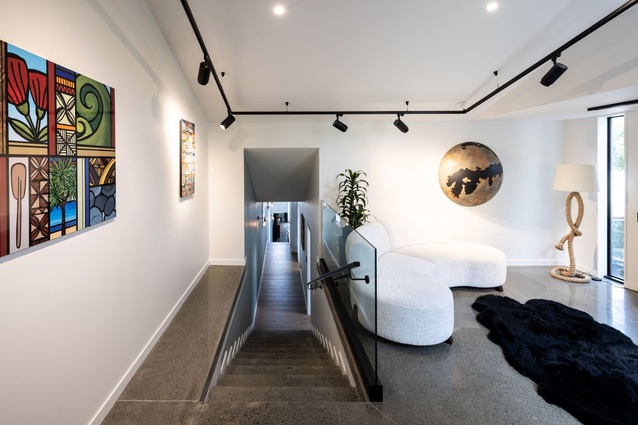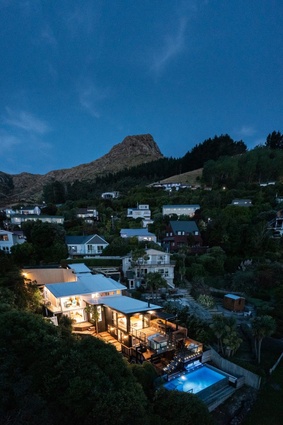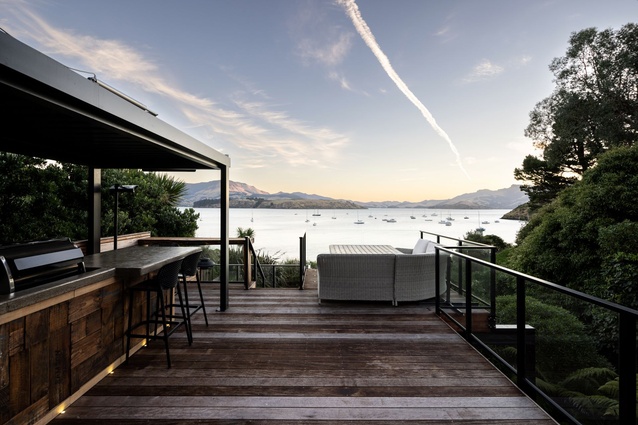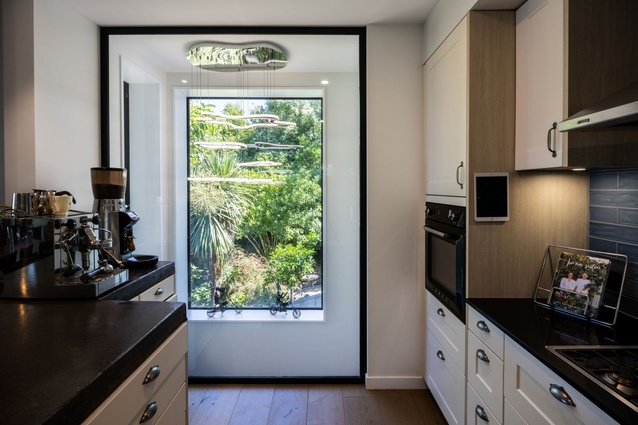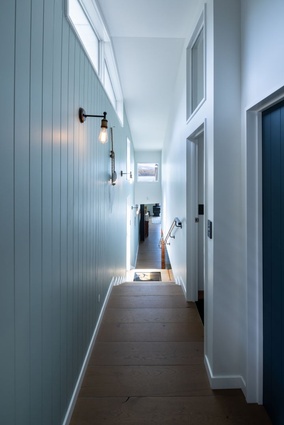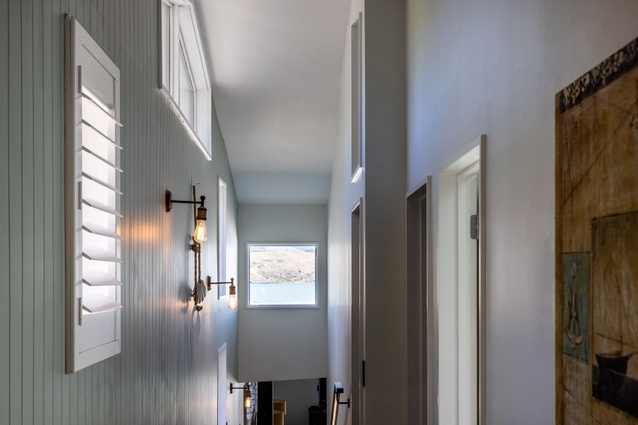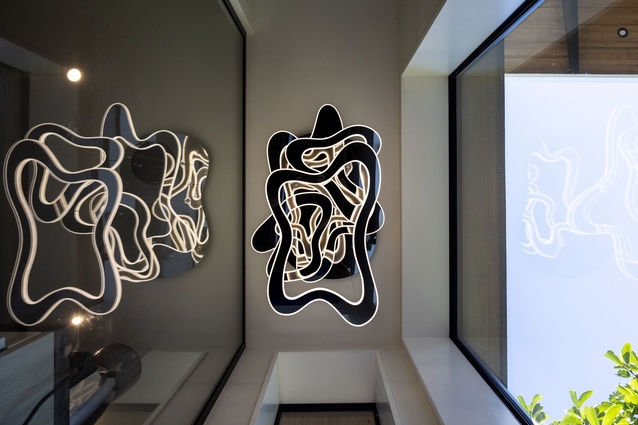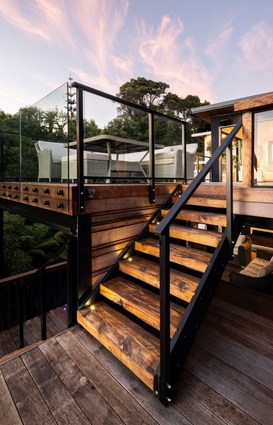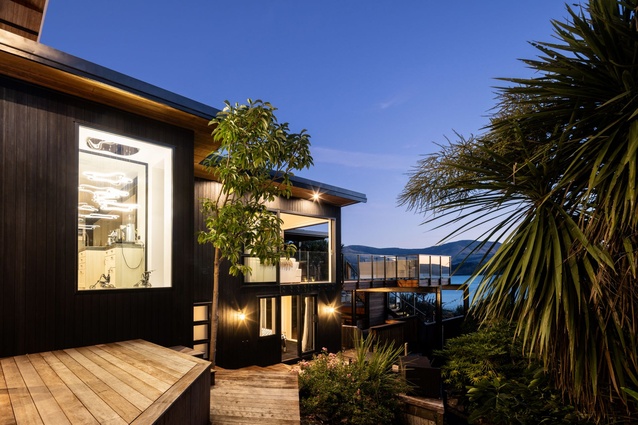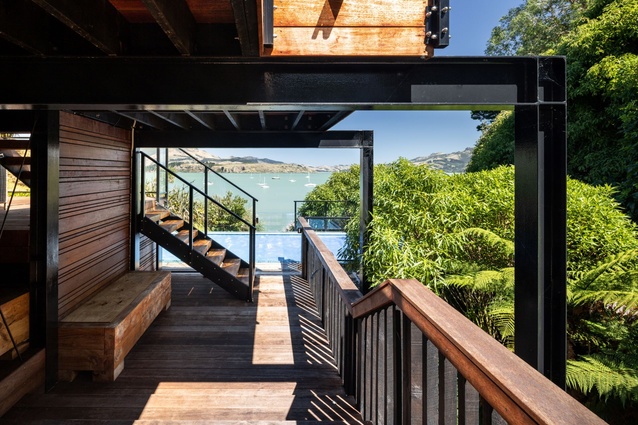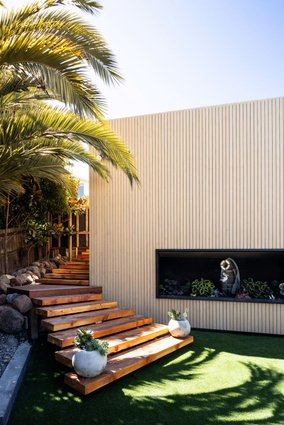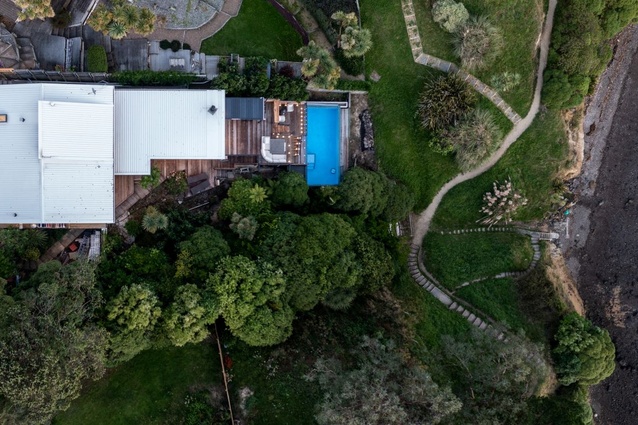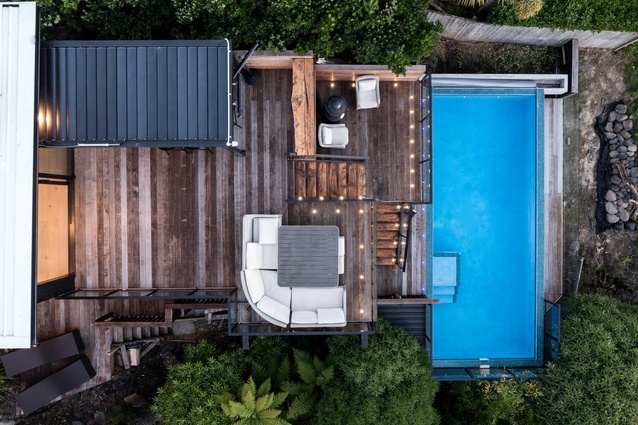Art and the outdoors
A curated journey to the shoreline is forged through the renovation of this home in Cass Bay, near Lyttelton.
Sitting some 20 metres from the coastline at Cass Bay, this home is what real estate agents call “absolute beachfront”, with spectacular views across to sparkling Lyttelton Harbour, Ōtamahua/Quail Island and the gently rolling hills of Banks Peninsula.
While the existing house was solid, the starting point for its renovation was a lack of flow between the interiors and the incredible surroundings. The homeowners had ideas about how to achieve this, with a reconfigured floor plan that would move the upstairs living spaces to the lower level, switching places with the bedrooms. To do so, they called Max Capocaccia from MC Architecture Studio, with a brief that also included the formation of a striking entranceway.
Capocaccia created a sculptural entrance of angular corten steel, flanked by the solid planes of a Neolith-tiled façade on one side and a softer, Abodo timber-clad object in the form of the garage on the other. Entry is into a gallery space hung with artworks, which then leads down into the rest of the house.
“We wanted to give emphasis to the entrance by creating a kind of portal,” says Capocaccia. “At the same time, the idea of the gallery is to link you to the beautiful natural landscape. Coming from the street, I didn’t want to give an open feeling but instead a sense of closure, of entering into a gate and from there the building would open up to the sea.”
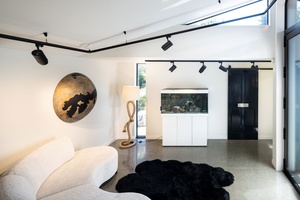
Aside from the garage and decking, the gallery space is the only new structure, which uses the footprint of the previous garage. Windows are limited and the focus is on the artworks, which include a striking half-globe by Dunedin artist Luke Calder illustrating Lyttelton Harbour.
The spaces beyond are eclectic in nature, driven in part by the homeowner’s art collection as well as a mix of architectural eras evident in the house’s materiality. Large windows take in the views from all rooms, while the property’s established trees provide privacy screening.
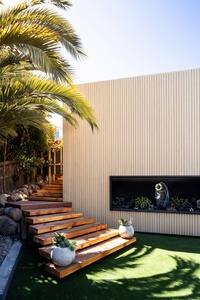
The new floor plan prompted the addition of terraced decking that flows down the front and alongside the home, providing many different opportunities for outdoor experiences among the tree-lined western face of the property as well as the true focus: the harbour-gazing view. The pool deck has several layers, with armchairs tucked away for private contemplation as well as a louvre-covered, dinner-party-friendly outdoor kitchen with plenty of space for guests to lounge and dine. Additionally, a sheltered courtyard tucked behind the garage, with a cut-out in the wall for planting and a set of grand stairs leading down, provides another private space to enjoy the outdoors.
The architect’s passion for both the design and its natural surroundings is clear.
“I love this place,” Capocaccia says. “The most important aspect for me is how it sits on the landscape and how the house is a link between the sculptural entrance and the openness of the terrace at the bottom. That is something that is strong in my mind, where the house reveals itself like layers. You enter from a place that is almost quite austere − you don’t have windows and it’s quite strong − then you experience the art, then slowly you go down and the house develops on your journey down to the shoreline.”

